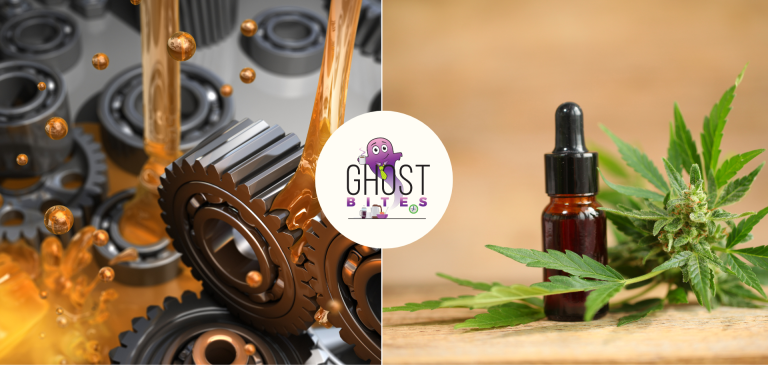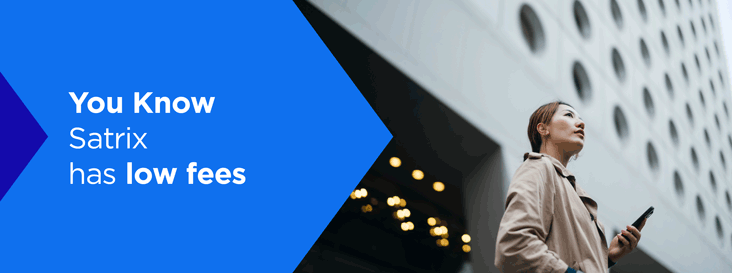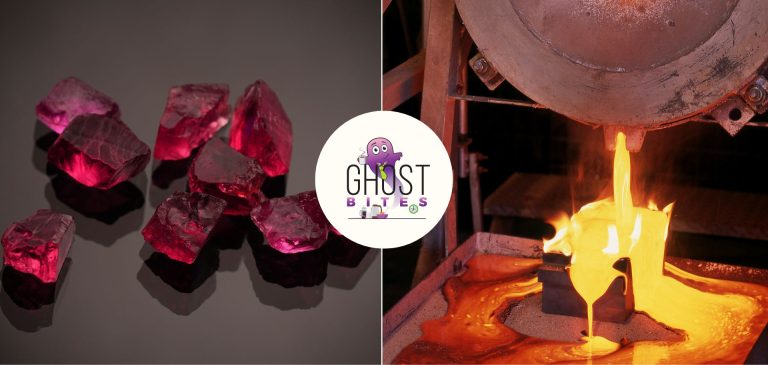Listen to the show using this podcast player:
To close out the year, René Basson of Satrix* made her debut on Ghost Stories for a fascinating conversation on the topic of money dysmorphia. This is a mismatch between financial behaviour and financial means – and yes, it can work in both directions i.e. whether you have plenty of money or not enough!
In addition to some great personal finance hacks to help you combat these feelings, René shared some helpful statistics from the SatrixNOW platform and talked about some of the observable trends in investing across genders. We also closed out the discussion with some important tips for the festive season around cybersecurity, so there really is a lot here to sink your teeth into.
Satrix Investments Pty Limited and Satrix Managers RF Pty Limited are authorised financial services providers. Nothing you have heard in this podcast should be construed as advice. Please do your own research and visit the Satrix website for more information on all their ETF products. This podcast was published on the Satrix website here.
*Satrix is a division of Sanlam Investment Management
Full transcript:
Introduction: This episode of Ghost Stories is brought to you by Satrix, the leading provider of index tracking solutions in South Africa and a proud partner of Ghost Mail. With no minimums and easy, low-cost access to local and global products via the SatrixNow online investment platform, everyone can own the market. Visit satrix.co.za for more information.
The Finance Ghost: Welcome to this episode of the Ghost Stories podcast. I’m pretty sure it’s the last one for 2024. Hopefully I’m right, quite honestly, because I think we could all do with a bit of a break. But the good news is that we are ending off with a really interesting show!
It’s December now. It’s the end of a very busy year. We’ve had elections at home and abroad. We’ve had this magical disappearance of load shedding that no one really understands. We learned that a GNU is a political thing, not just a wildebeest. We’ve seen some big moves in global markets. We’ve been reminded once more that if you’re not invested in the market, you’re not going to get those gains. But we’ve also been reminded that diversification is your friend.
And now, after that whole whirlwind situation this year, we’ve landed in that part of the year that is hardest to manage your personal finances. Because it is indeed Dezemba, boss. And that means that reckless abandon is here and your credit card is here, and it may well be time to live your life. Somewhere in the middle is probably the right approach, but we’ll talk a little bit about that on this show.
We’re also going to talk about some really cool statistics from Satrix. I think what’s really great is that we have a new voice on the podcast from Satrix. Now, I’ve been working with René Basson, who is the Head of Brand at Satrix for a good couple of years now, but she has never ventured in front of the camera – not that we use the video, but she’s never ventured in front of the microphone to do a podcast with me. So this is very exciting. René, welcome to the show and thanks for bravely stepping up and finishing the year off with me on this podcast.
René Basson: Thank you, Ghost. Thanks for having me. I appreciate it. You know what it’s like. Marketers always are the ones behind the scenes, not in the scenes.
The Finance Ghost: Yeah, there we go. The team has basically forced you to say, listen, we’ve done enough of these things. It’s your turn. It’s time to stop directing from the back.
René Basson: Exactly.
The Finance Ghost: We’re going to do a really good show around this concept of what’s called money dysmorphia, which I’d never heard of actually before reading the article you wrote. I’m excited to get into that. But before we do, we are going to spend a little bit of time on the SatrixNOW platform. Before we get into some of the stats, which I think are going to be particularly interesting, let’s maybe just set the scene of where this data is coming from. What is SatrixNOW? How long has it been around and what does it actually do?
René Basson: SatrixNOW is our Satrix online investment platform and we launched it probably towards the end of 2015 in partnership with EasyEquities. It’s been around for quite a while. The app itself launched in 2020. It’s your DIY platform. You can sign up, open an account and it’s self-directed.
The Finance Ghost: Good timing in 2020! You literally caught that Covid upswing of people suddenly investing from home. Was that by accident? Or was it already in the works and you just happened to have amazing timing? Was it in response to Covid?
René Basson: I think it was already in the works. It was before I joined, so I think it was already planned and it just happened that the timing worked out quite well for us.
The Finance Ghost: Yeah, sometimes life works out. You’ve got to be in the market to get lucky. That’s the point, including in business, so there’s a lesson in there. There’s obviously some really great data that comes through from this then, and I think it gives direct insights into the behaviour of retail investors in particular, which is really helpful. Obviously the South African savings culture is something that we all know about. What you do at Satrix and what I do at The Finance Ghost is all to try and address this and make it better and get people empowered to invest.
I’m personally very keen to see what nuggets you have in that Christmas stocking of yours from SatrixNOW – hit us with some stats! Let’s see what’s in there.
René Basson: Yes, I can share some stats. There are two things that we look at – we look at registrations, so individuals who’ve signed up and gone through a FICA process, and then the second piece that we look at is funded clients or invested clients. From a registration perspective, I’m looking at 2023 versus 2024 and the 2024 numbers are to about mid-November. We’re looking at a 9% increase year-on-year in registrations. Then from a funded client perspective, an 8% increase year-on-year, which is really positive considering what the markets have been up to and the economy.
The Finance Ghost: Yeah, that’s really good. I mean, there are not 8% more humans in South Africa, population growth is way lower than that. That suggests that the percentage of people who are coming into the platform and coming into the market is growing over time, which is very happy news.
René Basson: Definitely. Then I can share some nice demographics details with you, some age stats, those are pretty interesting. If you look at the registrations, the average age of someone who’s registered is 32. Then from an invested client perspective, the average age is 41. If we look at it since inception, so since launch in 2015, that average invested age is about 38, so a little bit lower. And then from a gender perspective, registrations are predominantly male, so 55% are male. But if you look at invested clients, it’s 52% female. We’ve seen a 1% increase year-on-year of female investors, which is really encouraging as well.
Then let’s look at location. I don’t know if you have a sense of where you think most of our investors are from, Ghost?
The Finance Ghost: I want to guess Western Cape, but I’m biased. But maybe it’s not that straightforward. Where is it, Gauteng? Probably, if it’s just the number of investors.
René Basson: Yeah, it’s Gauteng, that’s predominantly where the majority of the investors are. We’ve seen a bit of an increase of registrations from Gauteng, the Western Cape, and then followed by KZN, Limpopo and Eastern Cape.
The Finance Ghost: Interesting. So that would reflect the level of wealth in the country overall, not necessarily the trajectory, but just the number of people, which is kind of what you would expect to see.
Also, really interesting age stats actually. I guess it’s that phase of life as people have gone through their roaring twenties where they are paying back student loans and trying to travel a little bit and doing a whole bunch of different jobs and just figuring out what on earth they’re going to do with their lives. And in some cases getting married, not always, maybe having kids – early 30s, obviously this is all very much averages.
Then it seems to be at that point in time they then hit the platform and say, okay, at some point we need to start investing for retirement. I think the nuance here is people always need to remember that a retail investor signing up to invest in exchange traded funds through the SatrixNOW platform is doing this in addition to forced pension savings at work. This is someone who’s actually said and acknowledged and learned that what they’re forced to invest in from a retirement fund perspective through their salary – and it’s usually the case that there’s something, especially if you work for a larger corporate – is not going to get them there. They need to do more, which is absolutely right, then they land in the platform. Very interesting stats.
René Basson: Yeah. That actually gives me a good segue into the average investment amounts of this retail investors.
The Finance Ghost: Now that’s the juicy stuff. I was wondering if you were going to share some numbers. Let’s see.
René Basson: Well, I’ll give you a percentage. Obviously, I don’t want to share numbers specifically, but I think from an average investment amount, 2023 versus 2024, it’s a 61% increase, which is pretty impressive.
The Finance Ghost: I think that’s huge.
René Basson: It’s huge. Yeah.
The Finance Ghost: Is that on the per-month debit order type amount or is that the total account value?
René Basson: Total account value.
The Finance Ghost: Okay. So some of that is the market’s going up, right? It’s still really impressive.
René Basson: Yeah, it is really impressive. And then I’m sure you’d like to know the top funds or the most popular funds?
The Finance Ghost: Yes, definitely.
René Basson: The top five and 2023 versus 2024 are very similar. It’s a very small change. Satrix Top 40, our flagship fund and the oldest ETF in South Africa, is the most popular, both in 2023 and 2024. Then in 2023, it was followed by the Satrix Divi, then Satrix INDI, Satrix MSCI World S&P 500 and then the Satrix Nasdaq 100. I gave you six for 2024. The only difference was Satrix MSCI World ETF was number two, but very, very similar.
The Finance Ghost: That is super interesting. And is that measured by new funds flowing in? Or would that be measured based on the total value of those funds?
René Basson: It’s the total value of the funds and also how much new money is coming in. So how popular the funds are for new investors.
The Finance Ghost: I would have actually expected that the offshore stuff would be higher than that, because that’s where you can go and invest in Apple and Microsoft and all the fun stuff. It seems like lots of people are still piling into local funds, which is quite interesting. I don’t know, some clear familiarity bias maybe?
René Basson: Possibly. I really am not qualified to comment on that, to be honest. But I think the local stuff is still very popular, as we can see on the platform.
The Finance Ghost: No, it is definitely. Look, I can tell you from Ghost Mail and my own insight into this is that even though I beat the drum very often that offshore exposure is really important and that’s where you are genuinely buying the world’s best companies and everything else, I personally think it’s familiarity bias because I can see if I put out an article on local news versus something really important on international news, the local news will just get way more hits. It just will. I think there is an element of wanting to read about stuff that’s close to home. Maybe people think that’s where they have an edge, I’m not sure? Maybe the offshore stuff is just quite scary? Whatever the reason is, that seems to come through in your stats as well. So that makes sense.
René Basson: Yeah, it is interesting to see the MSCI World ETF move up into second place from 2023 to 2024. I think Satrix 40 might be familiar, people know it, it’s been around the longest. It’s probably why it’s so popular. Then MSCI World number two now, so there is a little bit of a shift we’re starting to see.
The Finance Ghost: Yeah, the Satrix 40 was the first share that I ever bought on the market. I remember it clearly when I opened my own – it wasn’t a brokerage account at the time – I would have done it, I’m sure I would have done it directly through Satrix. This were before the days of EasyEquities when it was a lot easier to do this. It would have been directly through Satrix. It probably would have been, I want to say, 10 or 11, maybe even 12 years. Somewhere there. Anyway, it shows how long this has been around, actually. Satrix 40 has been around forever.
René Basson: Yeah, definitely. Then I wanted to give one last random stat just in terms of our app downloads. We’ve actually had about 5,000 app downloads in the last year and surprisingly the majority are iOS downloads versus Android.
The Finance Ghost: No surprise there. Based on my podcast stats, I can tell you there’s definitely an over-indexing of Apple. I think Apple phones are just more expensive and so people who have spare income tend to have Apple devices. I personally have an extremely broken Xiaomi. It really is a complete basket case of a cellphone. I’m becoming my dad where I just want something that “makes phone calls” – it’s mildly embarrassing. I cannot bring myself to spend money on what Apple wants for a new iPhone. So here I am with my very broken Android. I guess I’m somewhat the exception because I also see that trend towards iOS in all the podcast stats. I’m not surprised that your app is giving you the same sort of information there.
I think let’s move on then from the SatrixNOW stats, which really have been pretty interesting, into this concept of money dysmorphia, which I think is a really important topic at this time of year. You wrote a pretty interesting article on this recently. It’s not a term that I’d really heard before. I think it’s quite clever how it sort of all comes together. Let’s start right at the beginning, which is in simple terms, what is money dysmorphia?
René Basson: It’s not a clinical term, it’s an internet term. It’s used to describe a warped or rocky relationship or perception of your finances. I’ll give you an example. You, no matter how much money you make, might feel financially insecure. You might have a lot of money in the bank, but you still feel like you don’t. Or, if you are really cash strapped and on a tight budget, you’re still impulse buying, so you’re not really believing the reality of your finances. I would say that some stress around money and finances is obviously quite normal, but this is worse than the standard concerns around cost of living. It’s more like obsessive or distorted, I’d say.
The Finance Ghost: Interesting. So that sounds like a very unhealthy habit and I would imagine that social media probably doesn’t help with this, especially among younger generations and the good old Instagram feed of people living their very best lives or talking about – I mean, I’m going to be honest, I think some of the FIRE-type content that I see is just as bad. I know it’s actually an unpopular view that I have, but I also don’t think that making people feel terrible about buying anything nice is healthy either. I really don’t. It’s as bad as living beyond your means.
Just aim for something in the middle. I really don’t understand this whole “I’m going to live like I’m poor for the best years of my life so that I can retire with lots of money when I’m too old to do anything with it anyway” – I will never understand that for as long as I live.
René Basson: No, I agree. I have the same kind of outlook as well. Social media is definitely aggravating these feelings of inadequacy, I suppose that’s what you could call it. And also, as a society, we tend to keep finances and money worries or stresses very private. That’s just what we do, right? We don’t talk about it very often.
I think we also developed this idea of wealth and what success looks like. You see all of this stuff online and I want to say you scroll on social media and you see everyone living their best lives, to quote the social media terms. You might actually be doing fine financially, but it’s trying to keep up with people, at least the perception that you’re trying to keep up with people.
If you look at Black Friday and Cyber Monday, you’re getting bombarded with online ads on social media. It’s ridiculous. I definitely think social media aggravates this and makes us feel pretty bad about things.
The Finance Ghost: Yeah. The more common one is the “keeping up with the Joneses” point, living beyond their means. It’s all that kind of stuff. I can understand why people do that. It’s a very easy trap to fall into. Obviously, we all want nice things and it’s frustrating when you can’t have them. It takes a lot of discipline to say I actually don’t need this thing, or I can’t really afford this thing, especially when you have the money.
There’s a very big difference between “I have R100” and “I can afford to spend R100 on this thing” – those two things are not the same thing. Just because you have the money in your pocket doesn’t mean you can afford the thing you’re looking at. Not understanding that difference is what gets people into all kinds of trouble.
The other thing you referenced there, which is in some ways even more interesting, is this mindset of: “I still can’t afford this” – I think it’s often when people haven’t really grown up with much and then they get to a point where they actually have money in their lives and then they still struggle to actually spend it, they go the other way, where they live beneath their means, but almost to a level where it’s unhealthy, right?
René Basson: Definitely. I think childhood definitely affects how we socialise. How we’re brought up and the relationship with money is definitely affected by that. I think, if you grew up in an environment where, say, money was a source of tension or it was scarce, and parents might have said money doesn’t grow on trees, we’ve all heard that, you’re probably internalising that and you develop an anxiety around money.
Even if you are doing pretty well, you might find it quite hard to spoil yourself or spend your money on something that you would enjoy. Then conversely to that, maybe you grew up in an environment where money wasn’t a problem and it was quite freely available, then you would probably adopt a more carefree attitude to money as an adult.
There’s a culture aspect to this too. Some cultures see being spendthrift and frugal as a virtue, whereas others see kind of consumption as normal. I guess it’s around trying to recognise these patterns and trying to break them. The first step is to reflect on your behaviours and your patterns and how that’s affecting your financial decision-making and then understanding, educating yourself, setting some goals, getting support if you need as well.
I think it’s a very complex area of human nature, that would be the way I would describe it.
The Finance Ghost: Yeah, it is. We all have our own tricks to deal with it. My journey has been one of not growing up with any spare money at all. There was a ton of pressure to get bursaries if I wanted to study what I wanted to study. There was just never anything spare. Then if life goes to plan and you get to your adult life and you have some spare money, it actually takes you a while to believe it! Then you have to be careful not to go, oh, you know, abundance! That also doesn’t work.
I find my personal journey has been a pendulum. At times, you feel like you start too far one way and then you swing much too far the other way, and then you go, okay, I’ve got to rein it in now. Maybe that’s what most people have to go through. They almost have to taste the full spectrum to then find the middle, because it’s quite difficult unless you’ve done that. Where is the middle? If you don’t know where the ends are, how on earth do you know where the middle is?
René Basson: It’s really difficult, honestly. I remember for me, when I first started earning money. My first job, it was like, wow, I’ve got all this cash. And like you fall into the traps of spending money very easily.
The Finance Ghost: Yep. No, you absolutely can. Look, I think it helps if you are very disciplined around, okay, this is the amount I need to save and invest every month. Then if this is what works for you, you can literally treat the rest as fun money. Then it almost doesn’t matter what you spend it on.
That doesn’t work for me because I still treat everything in isolation. I actually learned that in my corporate advisory days because I was working with clients who were literally billionaires. Then you would, I don’t know, finish a meeting with them and then there’d be a place just outside and then you’d need to buy lunch or coffee or something. A lot of these people, especially really hard-working, self-made, built-it-up-from-nothing, took-risks-in-businesses people, you try sell that person a coffee for twice what it should cost and they won’t buy it. They could buy that whole coffee shop 30 times over, but don’t rip them off on that one coffee!
I think that was such a cool lesson and my approach in life is treat everything as a separate thing. I know what a coffee should cost and so if it doesn’t cost that, it’s annoying and I’m probably not going to buy it even though I can afford it. Similarly, I don’t beat myself up about an overseas holiday because that thing costs a lot of money whether you like it or not. It’s wonderful and it’s great to be able to do it even though you can buy a gazillion coffees for the same price as your overseas holiday.
That’s been my personal method, just compartmentalise everything I look at and ask: is this thing worth it? In isolation – regardless of how much money I do or don’t have. That’s something that has worked very well for me.
René Basson: That’s a great approach, actually. It’s definitely something you’ve got to keep reminding yourself of because you don’t want to – as you said earlier, you want to enjoy your life. Actually when you do have the ability to buy a gazillion coffees, even though you probably wouldn’t, knowing the value of something is also very important because it helps you enjoy it. It’s better than it would be if we’re just spending frivolously.
The Finance Ghost: Absolutely. It really keeps you out of trouble, so it’s quite important. I also saw in your article that you actually referenced gender stereotypes, which is also quite interesting and they might play a role here. I think everyone can fall into this trap – you and I have just proven it on this podcast! But it’s still nuanced for each gender because there are still these societal norms that filter through. There’s still all the societal messaging that filters through. It’s gotten a helluva lot better in the last couple of decades maybe, but it’s still there. In your opinion, how does that affect the gender stereotypes at play here?
René Basson: Gender stereotyping is a huge topic. You could spend hours talking about this. I guess from my perspective, I would say it depends on how you socialised as a child, because that influences how you think about money. It’s. It could be cultural, could be your family environment, could be your community.
I can give you an example. Think of two young kids, a 10-year-old boy and a 10-year-old girl. A young boy might be asked to go mow the lawn and gets paid R20 and he learns that he can do a task and he gets paid for it. He’d probably go to the neighbour and demand R30 and make money that way. A young girl, for example, might be asked to look after her younger sibling because it’s the done thing. She probably won’t get paid for it. She doesn’t learn anything except that she has to work for free. I’m not saying that happens everywhere. I mean that’s just a very general example.
I think women and men prioritise spending differently. Women focus on education, health care, looking after the home, making sure that there’s food on the table, doing the grocery shopping. Men tend to focus on investments and when they do focus on investments, they focus on higher risks. Women tend to focus on lower-risk opportunities and therefore less return. I think also from a financial confidence perspective, women tend to have less confidence when it comes to finances. My example, as you socialise as a child, it’s also an influence.
So yeah, it’s a very complicated and in-depth topic. From a Satrix perspective, we’re also trying to focus a lot on encouraging women investors purely for this reason. I think we’re making small steps and small strides, so all positive.
The Finance Ghost: Yeah, it makes sense. Look, it’s so easy to offend half of earth when talking about anything that is remotely a gender stereotype, but I think a lot of what you’ve raised there is right. I think there’s this world of equal opportunity now – we’re certainly working towards that – and that’s fantastic. It’s maybe not there yet, but it should be and it will be, I hope soon. But I do also think that the genders do apply a slightly different lens when they look at things on average.
Obviously, there are exceptions, but the reason I now believe that is because I’ve had small children and I have friends with small children and you can absolutely see a difference between little boys and little girls. It just is what it is, never mind the academic textbooks or anyone else who may want to shout at me, it’s a fact. Spend time around enough toddlers who are boys and girls and you will see on average there are just certain realities around risk-taking and everything else.
As people become adults, they learn to manage this and it changes, but it is there. So I can understand how that thing comes through on average in how people react to managing their money, etc. It’s important to understand the bias that you might come with depending on what gender you are and where you are on that full spectrum of being affected by this bias.
If you are a very strong risk-taking person, then you need to think about that. Also, if you’re someone who’s very scared of this kind of thing, you’ve got to almost overcome that to learn that actually you’re doing yourself a great disservice. As with most things in life, extremities are not good. Somewhere in the middle is good. If you can understand which extreme you’re at and where your bias lies, then you have a better chance of getting past that and managing yourself better – either being less risk-taking or more risk-taking and finding that appropriate point on the spectrum for your own personality, right?
That’s how you overcome this money dysmorphia, although I know you’ve got a lot of other really practical, great advice on that. Let’s move to that. The article that you wrote had a very cool framework on how to manage some of this money dysmorphia. I’m going to open the floor to you now to take us through that.
René Basson: Thanks, Ghost. Yeah, I agree with your previous statements on understanding your biases and where you are on the spectrum. It does help you.
In terms of dealing with money dysmorphia, I think there are a couple of things you can do practically. First one is to take a step back and really understand your financial situation and where you’re at. When you’re doing that, analyse the patterns, your spending patterns. Why are you impulse spending if you are an impulse spender? Do you do it when you’re stressed or you’re emotional? Consider whether you are worried about values – are you buying or spending money in terms that align with your value? For example, if you’re trying to build wealth for your future generations, or you are wanting to be a philanthropist and work with your community and donate money to charity, find whatever is important to you. Once you’ve been able to do that introspection and understand where the behaviours are, you can work towards building healthier habits.
One of those things is once you’ve done that introspection, set up financial goals. Understand where you want to be short-, medium- and long-term. Are you saving for your retirement? Are you saving for a house, for example, whatever that might be? Because those kind of things are very positive incentives to initiate action.
Then I would suggest speaking to somebody. Get an IFA or a financial advisor to help you if you need to. If you’re in debt, consider a debt counsellor or a credit coach. There are a lot of very talented and qualified people out there that can help give you advice. A trusted intermediary would be a good thing.
Then I would be remiss to not say: keep investing. The SatrixNOW platform allows you to invest with R10. Put it aside, pay yourself first. If you can put aside R10 to R50 a month, then start doing that because you’ll thank yourself in the long term.
The Finance Ghost: Yeah, I completely agree with all of that. I think let’s close off then with just recognising where we are in the year. It is the season for all kinds of stuff. And sadly, one of those things is credit card scams and fraud and getting taken for a ride and your holiday getting ruined by the fact that someone’s now spent a gazillion rand on “Facebook ads” and all the other things that I see online all the time.
Part of personal finance is just managing your own risk, not just around what’s in your portfolio and your own biases and where you are in your journey as a family and all that other stuff. It’s also about being just eternally careful of fraud and scams. I think you’ve probably got some festive tips around some of that stuff to bring this year to a close?
René Basson: Definitely. It’s rife across all brands and all financial institutions. We’re all struggling with the same thing. I think to your point, always be vigilant and be very careful and trust your intuition. From a very practical point of view, if you’re traveling and you’re in the airport with free Wi-Fi, don’t do any financial transactions using free Wi-Fi and stay off your banking apps and your investment apps. Enable your two-factor authentication and make sure your passwords are strong. Then just from an investment point of view, I’d say never be pressurised into investing. If it doesn’t feel right, don’t go for it. If it’s too good to be true, it probably is. I would say those are the key things to keep in mind.
The Finance Ghost: Common sense, right? That’s the way to do it. Like you say, silly things like just using a little bit of data on your phone, rather hotspot it than use the airport Wi-Fi. If you’re going offshore, it’s even more severe, just think about that. I’ve gotten to a point in my life where I just roam. It’s really not that expensive. Then you’re not sitting there struggling with free airport Wi-Fi somewhere exotic – it’s just not worth it. It’s really not. That can very quickly ruin your holiday completely.
You’ve got to be vigilant back home as well. You really do have to just be careful all the time. Keep an eye on your statements. This festive season, you might see your own bad spending habits, but at least you bought something for yourself! It’s a lot worse if someone bought something for their partner instead of you buying for yourself. If a TV went off on your credit card, you better make sure it’s a TV that you bought. Seriously, just stay safe out there.
My last point is just to say thank-you to those who have listened to Ghost Stories this year and the Satrix podcasts. We’re going to do more of them next year. It’s all very exciting. There’s so much to learn – all about the products, all about the behavioural side.
The fact that you’re listening to this and putting in the effort already suggests that you are firmly on the right track. Don’t stop learning, don’t stop sharing these podcasts with your friends and your family who you think would benefit from them. I think don’t be shy to have the conversations about money with people. For some reason, it’s still this taboo topic. People will talk about the most outrageous things, but they will not talk about money. It’s just incredible for me. Make that the topic and actually help people out. Share your insights with them, share content with them that you think is great – from anyone, obviously, not just from me. There’s a lot of really good stuff out there.
Also just reward yourself for getting this far in the year. I think that this is the time to have that extra ice-cream, hang out with your family, go away for the night, just have fun. Watching every cent in December is also not fun. If you go in with a decent plan of how much you can spend, then you can actually spend it with enjoyment as opposed to having regret in January.
To the listeners of the show, have a fantastic festive season. Thank you so much for joining us this year. And René, I think we’re going to have to get you back on here. I’m not sure this can be your only podcast, or are we just going to break you out once a year, like the elf that entertains my son so much at this time of year once a day. Are you going to be our Christmas elf for December shows each year?
René Basson: Maybe. Maybe you can convince me to come back. I don’t know. We’ll see.
The Finance Ghost: There we go. We’ll see how it goes. René, thank you so much. And to the listeners, thank you. Ciao.

















